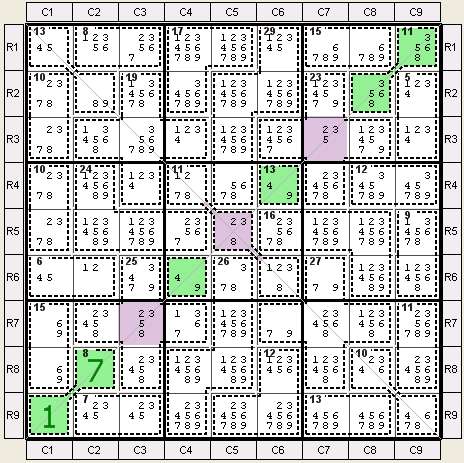Common Peer Elimination (CPE) was first introduced on the forum (the term at least) by Mike (mhparker) in A46 and A49v2. When a candidate in one house is the peer of all of that candidate in another house, then the candidate in the first house can be eliminated. For regular killers, this needs a cage crossing over into the first house to work. For diagonal killers, the diagonals can act to create a common peer. Jigsaw killers are hilarious for really weird CPE!
A86 is a classic example of CPE because of it's importance to the solution. I'll use Mike's WT to illustrate.

1. Outies C89: R14C7 = 3(2) = {12}, locked for C7
1a! -> no 1,2 in R23C8+R12C9 (CPE)

Mike has a really nice cell-cloning step so can't resist including that.
3. R3C9 and R4C7 must contain the same digit, because they both see R1C7
3a. -> this digit (1 or 2) must be constrained to C8 within N9
3c. -> R9C8 = {12}

The pic above highlights all the 1's in the grid.
7. 1 in N5 locked in C4 -> not elsewhere in C4
7a. no 1 in R5C3 (NOTE: this is a CPE move)
Now the puzzle breaker
8. 1 in N4 locked in R56C12
8a. -> no 1 in R7C1 (CPE)
9. Hidden single (HS) in R7 at R7C6 = 1
Many thanks to Andrew for making good suggestions, including to have this thread.
Cheers
Ed

